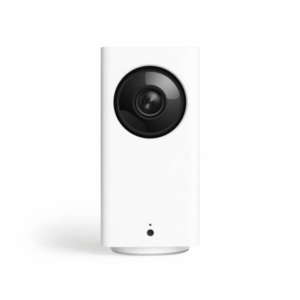
A home alarm system can be a good way to protect you and your family. However, it is expensive to install and purchase. Before making a final decision, it's best to compare all the options and do some research.
Alarm Prices
Cost of a home alarm system depends on your choice of system, how much protection you require, and what monitoring service you prefer. A basic system can cost $200 to $400 for installation and a few sensors, though adding smart home features can increase the costs.
Best Home Security System Price
The best home alarm systems have a range of features which can protect you, your family, and your property. The best home security systems will also provide you with timely and useful alerts sent directly to your email or mobile device.
Some systems even allow you to customize your security level. You can choose monthly or annual professional monitoring to give you added peace ofmind.

You can find some great deals on a range of different systems online. SimpliSafe Cove Abode and other companies offer different discounts. These include equipment savings, free HD camcorders and more.
Wyze, another option that is popular with budget-conscious home owners, offers a range of security options. The base package costs $100 and includes two window and door sensors, a movement detector, and an electronic keypad. Add-ons include a carbon monoxide/smoke sensor for $15 and an indoor security camera for $99 – a great value.
It's not always necessary to perform maintenance, but you should keep an eye on your batteries to ensure that they don't need to be replaced too often. Replacement batteries are available from most brands and last for a few months. But it's worth getting them checked every couple of years by a professional.
Most alarm systems are monitored using a home phone line, but some use a GSM chip to send signals and alerts. These systems are usually more expensive than wireless systems but can offer more coverage and provide a more reliable connection with emergency services.
ADT
ADT is the most trusted name in home security. ADT’s top tier plan offers insurance certificates, a $500 robbery-deductible reimbursement and other home automation features. ADT offers special packages that offer 0% financing from 12 to 60-months.

ADT monitoring fees vary depending on the size and location of your home. They are still lower than most other companies. They range from $10 to $60 a month depending on the system and how long you sign up for.
You should also be sure to research the equipment and accessories that you'll need. Many systems don't include a door/window sensor, for example, so you might need to buy one or more of these as well.
Your home's layout will also play a role in your alarm system's cost. Installing monitors in areas where you don't expect people to access them can help you save money.
FAQ
Motion sensors can be set up to sound an alarm
Motion sensor alarm systems have been around for decades, and they have become increasingly popular due to the rising number of break ins and thefts. These devices can be expensive and are not suited for use in cabinets. A motion sensor alarm system can be a great way to protect your home against intruders.
What is the best system for home surveillance?
Consider purchasing a home security camera system to protect your family. These systems are easy to use and they provide great benefits for both homeowners and renters. You can monitor your property remotely using your smartphone or tablet, computer, and other mobile devices.
Which home security system or home surveillance camera is best?
Home security systems work better than home security cameras, as they can detect sounds and movements even when no one is in the area where the system is installed. However, home security cameras can be mounted on doors and windows easily and are less expensive than home systems.
What is the top home security system in your area?
Ring Video Doorbell Pro remains the most popular home security system. It allows you to see and speak to anyone at anytime from anywhere using your smartphone. You can also record video footage and share it with family members and friends via text message or email.
Statistics
- Cove sets you free without punishing penalties and fees, unlike other security solutions that charge 75% to 100% of your remaining contract. (safewise.com)
- Depending on your insurance, 24/7 professional monitoring may qualify you for as much as 15% off your premium. (safewise.com)
- (In my experience, the discount on my home insurance covered about 25 percent of the subscription of an average plan, but your mileage may vary depending on your location and the size of your home.) (theverge.com)
- Unlike other online safety services that charge up to 100 percent of your monthly fee, Cove charges no upfront fees and has no hidden costs.
External Links
How To
How to Install Outdoor Motion Lights
How to install outdoor lighting
The installation process of outdoor motion lights begins with the selection of the right light fixture type. Next is to choose where you want your lighting fixtures. Next comes the wiring. The final step is to mount the fixtures.
Outdoor motion lamps are used to illuminate walkways and driveways, pathways, sidewalks and patios. You can find them in many shapes, sizes, colors, and styles. Floodlights include spotlights. Pendants, downlights. Track lights. Wall sconces. Chandeliers.
There are three types of motion lights: wired, wireless and battery-powered. Hardwired systems are wires that run directly from the power source to the fixtures. Wireless systems transmit signals by using radio waves. For the operation of the fixtures, battery-powered systems use batteries.
Installers of hardwired systems are often electricians. You should ensure that the electrician you hire knows how outdoor motion lights are wired. Installing these types of systems is a specialty, so you might consider hiring someone else.
It's often much easier to install wireless systems than hardwired. There are no cables to run through walls or ceilings. However, if you decide to purchase a wireless system, you must first figure out which kind of wireless technology works best for you. There are two main types of wireless technologies: infrared (IR) and radio frequency (RF). IR systems require line sight between the receiver and transmitter. RF systems allow some obstruction due to the fact that they bounce off furniture or walls.
It is important to determine what type of wireless controller you will be using before you purchase a wireless system. Outdoor motion lights are equipped with controllers. But if you prefer to control them yourself, you'll need to choose a wired remote or a handheld remote. Wired remotes can be attached to fixtures by cables. The handheld remotes are similar to flashlights, and can be operated by pressing buttons on the bodies.
Installation of battery-powered systems requires little effort. Plugging them into an outlet is all that's required. Most models include sensors that detect movement to prevent them from turning on if there is no motion. The lights automatically turn on when there is motion near the sensor.
Many outdoor motion lights have timers. These can be used to reduce energy consumption by switching lights on/off at night. The timers can be set to run for between 10 and 24 hours.
It's tempting to spend more on expensive outdoor motion lights. If you do not need that particular feature, it isn't worth the extra expense. An LED spotlight is enough. It won't cost much, and it will provide plenty of illumination.
The Best Home Security System. Over the past few years, home security has seen tremendous growth. This growth has been fueled by technological advancements and increased public awareness regarding crime prevention. There are many options available to homeowners when choosing a home security program.